 The following text was excerpted from a personal history written by Erik W. Austin, whose career at ICPSR lasted 41 years and included service as interim executive director. Austin says: “I have written these pages from my recall of events and developments described below. These recollections are my own, and do not reflect ‘official’ institutional history. Admittedly, some aspects of the consortium’s programs and activities will be slighted due to my tangential involvement in them. Contemporary survey data developments, the details of computational matters, and the Summer Program are three such areas that won’t get as much ink as they undoubtedly deserve.”
The following text was excerpted from a personal history written by Erik W. Austin, whose career at ICPSR lasted 41 years and included service as interim executive director. Austin says: “I have written these pages from my recall of events and developments described below. These recollections are my own, and do not reflect ‘official’ institutional history. Admittedly, some aspects of the consortium’s programs and activities will be slighted due to my tangential involvement in them. Contemporary survey data developments, the details of computational matters, and the Summer Program are three such areas that won’t get as much ink as they undoubtedly deserve.”
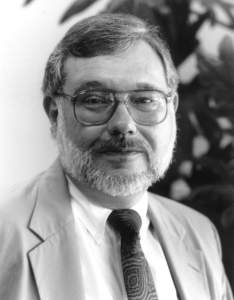
In 1990, Jerry Clubb announced his intention to step down from his position as Executive Director the following year. A search committee (the first in Consortium history)i was formed to seek Clubb’s replacement; Council participated in the search process from the beginning. Several dozen applications were received for the position, were reviewed by the search committee, and a set of four finalistsii was chosen for on-site interviews. Three of the four finalists were from outside the University of Michigan, with the fourth being former ICPSR senior staff member Mike Traugott. The four candidates brought in for interviews in the Spring of 1991 were Kenneth Bollen (Sociology, University of North Carolina), Mike Traugott, Barbara Heyns (Sociology, NYU), and Richard Rockwell (Sociology, Social Science Research Council). Each of the candidates met with the search committee, with CPS and ISR scientists, and with ICPSR staff, and gave presentations on their research interests as well as on ICPSR and its future. After the interviews were completed, and as required in their charge, the search committee forwarded to CPS and the Council an unranked list of candidates deemed best qualified. This list had three names on it. After some discussions with Council chair Michael Baer (Political Science and Provost, Northeastern University), CPS Director Jacobson in May of 1991 selected Richard Rockwell to replace Jerry Clubb. Rockwell took office in September of 1991, beginning his mandated five-year term as the fourth Executive Director of ICPSR. (Jerry Clubb subsequently retired from the University of Michigan, and moved to the state of Washington, where he and his wife had grown up.)
Technological change dominated the decade of the 1990s for ICPSR. Its pace was frantic for the staff as well as for the Consortium’s constituents. At the beginning of the decade we proudly announced the availability of data on diskettes, then on cartridge tapes, followed by CD-ROMs. We experimented with FTP file transfers, and acquired an optical disk “jukebox” on which to store the majority of our holdings. All of these technologies were being dabbled in by businesses and universities, and ICPSR was neither ahead nor very far behind the curve of trying out these technologies. Each of them was relatively short-lived in the first half of the decade. (We never utilized the optical disk jukebox, as its retrieval speed proved too slow for the volume of data that was certain to be requested of it.)
In mid-decade, the Internet and World Wide Web took off like a rocket. ICPSR’s first website was developed in 1994. It was designed by one of NACJD’s data processors, who taught himself to write the code that stored, displayed, and delivered text on a website. Delivery of data via the website quickly became the preferred mode for scholars to access and download Consortium data files.
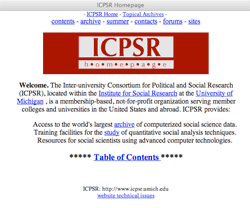
ICPSR continued its popular service as a provider of decennial US Census data as the products from the 1990 Census became available. Benefiting from a Joint Statistical Agreement with the Census Bureau, and with funding support from grants awarded by the National Science Foundation, the National Institute for Child Health and Human Development, and the National Institute on Aging (along with funds from member dues), the staff acquired all major files from that Census and offered them to member institutions without charge. The result was a great expansion in the amount of data acquired, processed, and supplied from 1991 through the middle of the decade. This phenomenon was likened to a “pig in a python”iii by Richard Rockwell, as the massive number of 1990 Census data files worked its way through our system and out into the hands of the research community. The Summer Training programs of 1991-1993 featured heavily subscribed one-week workshops on the 1990 Census products and how to use them.
An old friend returned to the halls of ICPSR in 1992. This was the Executive Directorship of the Social Science History Association (SSHA). The holder of this position, Howard Allen of Southern Illinois University, was forced to step down for health reasons, and SSHA president Stanley Engerman asked me to fill out the rest of Allen’s term. With support (financial and intellectual) from ICPSR Executive Director Richard Rockwell, I agreed to take the position. ICPSR thus returned to its initial role of being the main institutional source of support for this academic professional association. I was subsequently elected and re-elected to the position three times, and served in that capacity from 1992-2006.

In 1995, Executive Director Rockwell announced a reorganization of the ICPSR staff. He eliminated the position of Assistant Director held by Carolyn Geda, and sought new leadership of the Computer Support Group. Carolyn left the Consortium in the late summer of 1995, and retired from the University of Michigan later that year. This reorganization was controversial with the ICPSR staff, with the Council (one member resigned in protest), and particularly with the OR community with whom Carolyn had interacted so closely over the years. A regularly scheduled programmatic review of ICPSR and its Executive Director commenced in the fall of that year, and the fallout from the staff reorganization featured heavily in the evaluation process. The review committee appointed by CPS Director Jacobson and Council chair Carole Shammas (History, University of Southern California)iv recommended offering Richard Rockwell another term as Executive Director, and the ICPSR Council voted to offer Rockwell a three-year term (1996-1999).

Staff actively pursued technological upgrades to its holdings in the latter half of the decade of the 1990s. We completed the third major migration of all our data, this time off magnetic tape and onto magnetic disk (for the “distribution” copy of holdings) and cartridge tape (for the archival and security copies of the holdings, stored off site). With the help of two major grants from the National Science Foundation (in 1997 and 1999), we converted all our (formerly) paper codebooks to digital form so that we could deliver them, as well as the numeric data files, through the Web. Through the second of the NSF grants (part of their “Social Science Infrastructure” initiative), we were able to begin “marking up” our metadata in eXtensible Markup Language (XML) to improve the process of discovery of our holdings in an ever-crowded world of Internet-based content. That grant also permitted the start of our continuing project to locate and link publications that used ICPSR data to the metadata for those collections. (The latter project is ongoing; as of October, 2006, we had located over 38,000 relevant citations. [Ed: By 2014, the number of citations in this facility had increased to over 62,800.] The project to digitize all our codebooks was begun with NSF funds, and completed with member dues funds in 2003, when the last paper codebook was converted to Portable Document Format (PDF).)
Two new topical archives came into being in 1997 and 1998. The first of these, the Substance Abuse and Mental Health Data Archive (SAMHDA), was created in response to an RFP from the Substance Abuse and Mental Health Services Administration (SAMHSA) of the US Department of Health and Human Services. SAMHDA’s holdings came to include three serial data collections that are among ICPSR’s most popular: the National Survey on Drug Use and Health (1979-2009); Monitoring the Future (1975-2009); and the National Comorbidity Survey (1990-1992; 2001-2003). JoAnne McFarland was recruited from outside U-M in 1997 to manage SAMHDA. A second topical archive, focused on data for studying education, broke the mold of ICPSR’s topical archive formation. Nearly all of its predecessors had come into being as the direct result of sponsor interest and financial commitment from the very beginning. In most of those topical areas, ICPSR had taken a reactive stance, responding to an initiative by a funding agency for using ICPSR’s topical archive mechanism to safeguard and showcase research data that the sponsor had created or funded. In the early 1990s, the Council’s Archival Development committee took a step back and asked, “What’s the most important research area not covered by any of our topical archives that WE should seek to develop?” The consensus was that the education research field was the most promising. Richard Rockwell and I then spent five years trying to find a sponsor for such a topical archive. By 1997, we had received a commitment from the National Center for Education Statistics (NCES) for just such an archive, which we named the International Archive of Education Data (IAED). Under its auspices, we acquired and processed thousands of files (dating back to the 1960s) that NCES had created. NCES discontinued its funding for this topical archive in late 2005.
The Constitution, Bylaws, and Memorandum of Agreement that were created in 1991 attempted to forestall an ICPSR separation from CPS by setting down in writing applicable conditions and rights that ICPSR would have within CPS. By the late-1990s, it became apparent to Council and finally to ISR that ICPSR’s interests would be best served by its separation from CPS, and its establishment as an independent unit within ISR. This, of course, had been the recommendation of the Blalock Review Committee in its 1989 report. A key actor in what became “the end of The Troubles” was new ISR Director David Featherman, who took office at ISR in 1995, and was the first “external” Director in the Institute’s history. With the active assistance of Council Chair Halliman A. Winsborough (Sociology, University of Wisconsin), Featherman brokered the separation of ICPSR from CPS, and in 1998 established the Consortium as a separate unit within ISR. The Memorandum of Agreement was then revised to be an agreement between ICPSR and ISR to reflect that institutional arrangement.
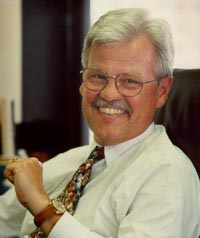
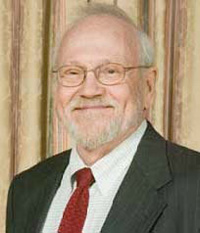
In 1998, ICPSR was again on the move locationally. The entire organization was moved out of the ISR building on Thompson Street to rental space three blocks away. Chosen as the new location was an office building at 311 Maynard Street that had formerly been Jacobson’s Department Store until Jacobson’s relocated to the Briarwood shopping center on the outskirts of Ann Arbor. The building that had housed the department store was sold to Borders Group International, which used part of the building for its flagship book store and part for corporate offices. The corporate office portion of the “Borders Building” was vacated by the company in early fall of 1998, and ICPSR moved into that space on Halloween weekend. ICPSR was still growing and was able to occupy more space than it had had in the ISR building; staff took residency in the two lower floors of the building, while the uppermost (second) floor was reserved for the Population Studies Center, soon to become ISR’s new fourth Center. The space ICPSR rented in the building at first seemed quite commodious (in spite of having no windows in any of the offices), with two central lobbies that gave a somewhat open feel to the adjoining assemblage of offices and cubicles. Within two months of occupying its space at Borders, however, major problems cropped up for the Consortium staff located there. At the top of the problem list was air quality. A major air intake vent for the lower two floors had been constructed on the side of the building, fifteen feet above ground level. The City of Ann Arbor had subsequently extended a city parking structure over the Borders Building, and the air intake vent was thus located under a concrete overhang that acted as a tunnel. Trapped in this tunnel (which extended across Maynard Street to the parking structure) were diesel fumes from delivery trucks; these got sucked in to the Borders Building through the intake vent. The fumes were very noticeable in the building, and caused numerous employees to become ill. Staff frequently had to leave the building because of the fumes; some staff members quit as a result of the environmental problems. Complaints from ICPSR management about these conditions fell on deaf ears at ISR, and the University of Michigan environmental safety office was ineffective in resolving the problems.

These conditions were very trying for the ICPSR staff. To make matters worse, we had to endure two other assaults on the office environment there: six months of reconstruction jack-hammering on the parking structure directly overhead in 1999, and elevated radon levels in a portion of the lower level of the building. Council was kept fully informed of these problems, and expressed support and concern at every opportunity. With ISR, the Borders Corporation, and the University unable or unwilling to take remedial action, Council authorized expenditure of ICPSR monies to relocate the air intake vent, and add an effective humidifier to the HVAC system of the building. These improvements were only partially successful, and health problems continued to plague the staff. In desperation, we implemented a work-around solution by renting additional office space a block away from the Borders Building (in the Carver-Gunn Building at 506 East Liberty Street, above an army surplus store). We relocated a number of the most health-affected staff to Carver-Gunn space in September of 2001, including all the staff who worked on the NACDA and SAMHDA topical archives, as well as my administrative assistant. While this was far from an ideal arrangement, it at least moved out of harm’s way a number of staff whose continuing health problems were a major concern for us (including one staff member who had had to work from home for nearly two years!).
In the late-1990s, we took a step to add to the ICPSR staff complement some individuals with University of Michigan faculty titles. The first was Sidney M. Bolkosky, Professor of History at the University of Michigan, Dearborn. Bolkosky is a specialist in research on the Holocaust, having interviewed hundreds of Holocaust survivors as part of his Voice/Vision oral history project at UM-Dearborn. He accepted a position as ICPSR Faculty Associate in 1997, a year after he had helped me raise grant money to support seven substantive sessions on the Holocaust at the 1996 annual conference of the Social Science History Association in New Orleans, Louisiana. The second Faculty Associate to come on board was Daniel E. Little. Little is a philosopher of the social sciences, and had been recruited to become the Chancellor of the University of Michigan, Dearborn. Sid Bolkosky chaired the search committee that recommended Little for the position. Bolkosky told me that in Little’s campus interview, Little had expressed an interest in an appointment at ICPSR (not ISR!). Bolkosky’s and Little’s appointments were the first faculty “affinity” appointments ever at ICPSR. (The “Associate Director” appointments of previous years were informal and ICPSR-designated, without any University of Michigan approval or support). These appointments presaged an approach at outreach to U-M faculty that would gain momentum in the next decade.
Richard Rockwell announced his intention to leave ICPSR, in the fall of 1999, to take a position as Director of the Roper Center at the University of Connecticut (as well as a faculty position in Sociology at that university). A search for his successor was initiated, under the direction of a search committee chaired by Gary King (Government, Harvard University).v Announcements of the vacancy brought forth more than a dozen serious applicants by early 2000, two of whom were invited to the campus for in-person interviews. On the cusp of a formal offer, the leading candidate (Steven Ruggles, developer of the hugely popular IPUMS historical US Census facility and an historian at the University of Minnesota), withdrew his candidacy to remain at his home university.vi The search was re-opened, but it took more than another year to secure a successful candidate. That individual was Myron P. Gutmann, a historian and demographer who was directing the University of Texas Population Center. Myron accepted an offer for the Executive Directorship in January of 2001, and began service in the post that August.
Upon Richard Rockwell’s departure, former Council Chair Hal Winsborough stepped in as Interim Director and served until August of 2000, when he returned to Wisconsin (state), having retired from the University of Wisconsin the previous year. I was appointed as acting Executive Director and served in that capacity from September 2000 to July 2001.
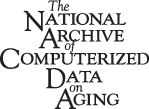

Leadership of ICPSR’s two oldest special topic archives (NACDA and NACJD) changed in the late-1990s and the years immediately following. James McNally came from Brown University to manage NACDA in 1998. His predecessors as NACDA Project Manager were Patricia Green (1981-1986), Barbara Zimmerman (1987-1991), and Nancy Fultz (1992-1998). Christopher Maxwell, on the Criminal Justice faculty at Michigan State University, became the fourth NACJD Project Manager, in 2003. He succeeded Christopher Innes (1980-1988), Victoria Schneider (1989-1993), and Christopher Dunn (1993-2003) in that leadership role. Both McNally and Maxwell had actively conducted research in their respective fields, and were awarded scientific (faculty) job titles for the roles they played at ICPSR.
[ICPSR founder Warren Miller died in January, 1999. His obituary in the New York Times (pdf) can be viewed here. The ICPSR Bulletin of Spring 1999 (pdf) also contained some remembrances of Miller from several of his colleagues. —Ed.]
iThe search committee appointed by CPS Director Harold Jacobson was chaired by Maris Vinovskis (History and ISR, University of Michigan). Also on the committee were Christopher Achen (Political Science and CPS/ISR, University of Michigan), William Flanigan (Political Science, University of Minnesota), JoAnn Dionne (Social Science Data Archive, Yale University), Karl Taeuber (Sociology, University of Wisconsin), Martin Whyte (Sociology, University of Michigan), and ICPSR staff member Erik Austin.
iiA fifth individual, an economist, was also selected as a finalist. He withdrew his candidacy when invited to visit ISR as a member of the “short list” of candidates.
iiiErik Austin and Richard Rockwell, “The Python that Swallowed the Pig: ICPSR’s 1990 Census Data Project,” ICPSR Bulletin, Vol. XVII, No. 3 (February, 1997), 1-7.
ivThe Programmatic Review Committee was chaired by former Council chair Michael Baer (Provost, Northeastern University), and included as members Kenneth Organski (Political Science and CPS/ISR, University of Michigan), Ilona Einowski (Data Library and Official Representative, University of California, Berkeley), and former ICPSR Council member Rachel Rosenfeld (Sociology, University of North Carolina).
vOther members of the performance review committee were ICPSR Council member Margo Anderson (History, University of Wisconsin, Milwaukee); Frank Stafford (Economics and ISR, University of Michigan); Mark Becker (Public Health and ISR, University of Michigan); and ICPSR staff member Hank Heitowit.
vMembers of the search committee, besides chair Gary King, were Diane Geraci (Library, Binghamton University), Frank Stafford (Economics and ISR, University of Michigan), Hal Winsborough (Sociology, University of Wisconsin), and ICPSR staff member Janet Vavra.
viThe second candidate invited to a campus interview was a geographer.